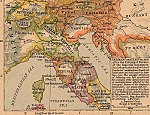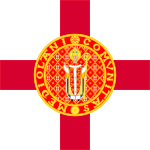Gruppo Bertone, commonly known as Bertone, was an Italian industrial design company which specialized in car styling, coachbuilding and manufacturing. It formerly was also a car manufacturing company. Bertone styling was distinctive, with most cars having a strong "family resemblance" even if they were badged by different manufacturers. Bertone had styled cars for Abarth, Alfa Romeo, Aston Martin, BMW, Citroën, Ferrari, FIAT, Iso, Lancia, Lamborghini, Mercedes-Benz, Opel, and Volvo, among others. In addition, the Bertone studio was responsible for two of the later designs of the Lambretta motorscooter.
The company was based in Grugliasco in northern Italy. Gruppo Bertone was founded as Carrozzeria Bertone in 1912 by Giovanni Bertone. Designer Nuccio Bertone took charge of the company after World War II and the company was divided into two units: Carrozzeria for manufacturing and Stile Bertone for styling. Until its bankruptcy in 2014, the company was headed by the widow of Nuccio Bertone, Lilli Bertone. At the time of bankruptcy, it had some 100 direct employees. In 2014 most employees lost their jobs and were not absorbed by following acquisitions. Cars from the company museum went to other museums, like Automotoclub Storico Italiano and Volandia.
After its bankruptcy, the Bertone name was acquired by an architect and retained by some of its former employees, who continued as a Milan-based small external design office, Bertone Design, much more focused on industrial design and architecture.
Bertone Design was sold to the group AKKA Technologies in the second quarter of 2016, which already had automotive design activities through Mercedes Benz Technologies, owned by the group AKKA Technologies for several years. The AKKA Technologies group thus took the opportunity to increase its positioning in engineering and services to manufacturers to deliver turnkey vehicle projects.
The AKKA Technologies group subsequently sold the Bertone brand to Ideactive, a company owned by Mauro and Jean-Franck Ricci. The two Ricci brothers, who are passionate about cars, are planning to relaunch the brand and revive the legend in the future.












